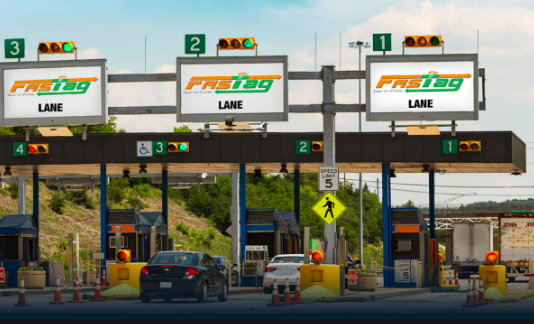It’s highly important today to know about FASTags, and the big change this concept is expected to carry soon.
Come January 2020, and there shall be a major change in the way you drive and commute on the highways and expressways in India. But, first up some perspective. It cannot happen that you travel in India and haven’t encountered anything like a toll. Isn’t it? Toll plazas are important and strategic entry points that connect different states and cities. They warrant a particular levying of tax that goes directly to various state governments that are responsible for the upkeep, maintenance, and construction of roads and highways. But over the years, efforts have been given to make the overall experience of driving a safe and convenient process.
Especially in the context of a country like ours where there’s hardly any dearth in the growing number of vehicles, efforts are carried out by the government to make travel and commuting a relatively hassle-free process.
In those lines, it could be said that the introduction of FASTags is something of a boon, an effort taken to better the passage of travel especially in a way that is linked to the collection of toll tax electronically.
Therefore, in those lines, it becomes important to know about FASTags and the smoothness they are intended to impart in the whole travel experience on the Indian roads, highways, and expressways.
But first up, what is a FASTag and why is it important to know about it?
To understand the meaning of the entire concept, let’s first know about FASTags in the easiest manner possible. A FASTag is basically an electronic system of collection of toll in India. It allows the user, i.e., in this context, the driver on the road to make the toll payment directly from a prepaid or savings account that is linked directly to the toll owner.
So in the simplest of ways, FASTags are an online method of payment that is made by a user to the toll owner involving a prepaid or savings account. But the process of payment is governed or looked after through the Radio Frequency Identification Technology.
If you want to know about FASTags then you must also know who operates this brand new system which is soon going to be made operational and compulsory come January 2020.

To that end, it is important to know that the entire method and procedure is operated by the revered National Highways Authority of India, better known as the NHAI.
But all of that said, here are more important things to know about FASTags:
Where can you get a FASTag from?
First things first. It’s easy to source the FASTag from any of the following sources: such as- any bank’s website, Amazon, Flipkart and Paytm Mall. So there are plenty of options to source it online.
But then what about the offline options?
The offline options are available at various point of sale (PoS) locations of the certified issuing banks. At present, there are 24 of them. The same being located at toll plazas or banks’ sales offices. In addition, you can also get them at Common Service Centres, at the office of toll operator at plazas. Besides, they are also available at certain regional offices of the NHAI and also at certain petrol pumps.
What kind of paperwork is needed?
Another important thing to know about FASTags is that they are linked to an account, as also stated previously. Therefore, what is required is the KYC documentation. You will need to submit the Registration Certificate (RC) of the vehicle along with the application for FASTag and your own proof of identity.
How much does one pay for a FASTag?
The thing that is important to know about FASTags is the basic price. A tag costs only Rs. 100. But there is a catch. At present, this is being given away without the end-user incurring any cost whatsoever; so it is free!
But here’s what one needs to keep in mind. There’s also a Rs 200 security money (for NHAI tags there is Rs 150 discount) that one has to pay. But don’t worry, for this just a onetime cost. And there’s more.
You will need to top up your tag with the money which will then get deducted at toll plazas. Rs 200 is the minimum initial top-up.


